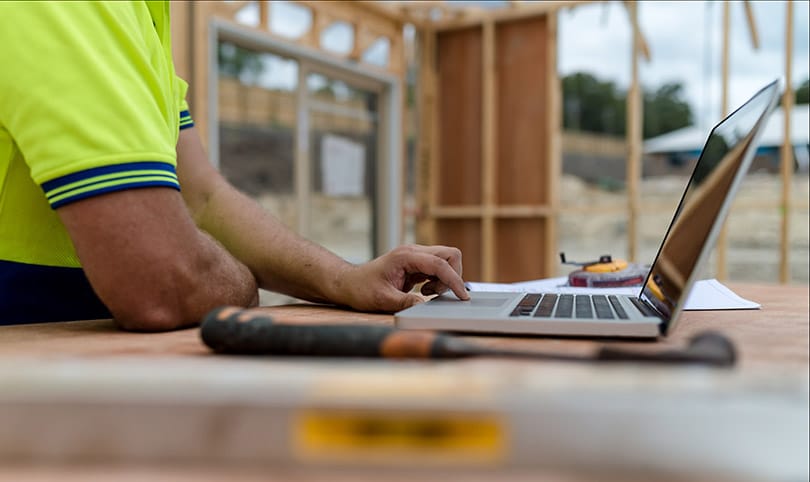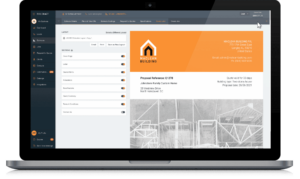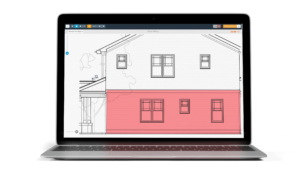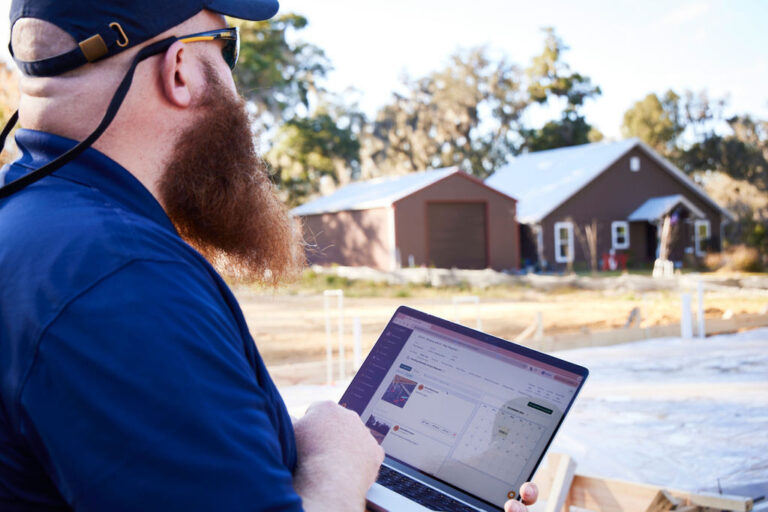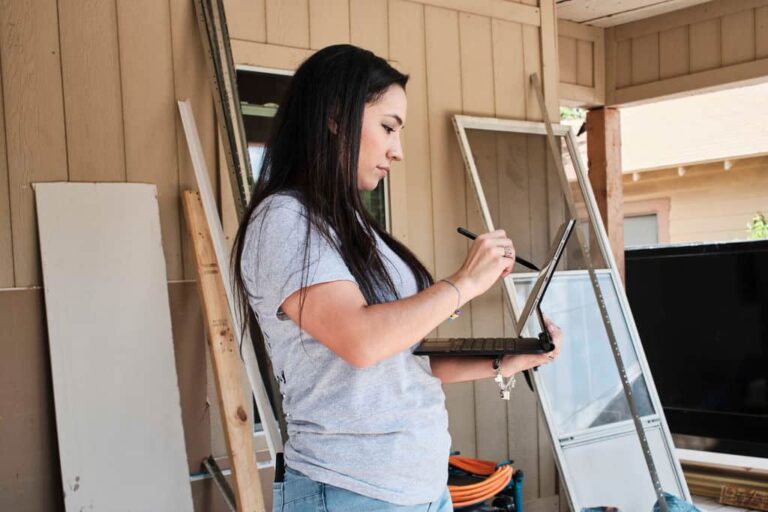As a pro in the construction business, you well know the long list of factors to consider when writing an accurate home construction estimate. From material purchasing and equipment renting, to labor hiring and scheduling, you have much to consider.
And the ever-changing cost of materials and the overall home building climate amid higher interest rates and shifting homeowner demand make things no easier to predict. All of these combine to make writing accurate estimates one of the most challenging parts of a builder’s job.
But the smart builder takes the time to create detailed estimates because accurate estimates that consider both direct and indirect costs save money–often before a single tradie steps on the site, lays a brick, or pours the first footing.
Let’s look at some major factors to consider when writing an estimate to cover all your costs:
Permits and paperwork: plan for it
Home construction projects typically require a stack of paperwork that can take months to approve. Here’s what to keep in mind beyond just the time it takes to fill out forms:
- Local delayslocal governments work at their own speed. Some move like molasses, others lightning fast. Do your research ahead of time and build the appropriate government approvals into your construction proposal;
- Unique requirements–know if your project site lies within a historical district or requires special preparation for foundations and utilities. Checking the design and plans against local requirements avoids costly variations, some of which, the homeowner may hold you responsible;
- Code requirements–renovations are often complex projects that require demolition of existing structures as well as adding custom features like vaulted ceilings, sliding doors, bay windows and spiral staircases. Ensure you know how local code governs both the removal of what’s already there and what you plan to build;
- Professional licenses–make sure all members of your team are licensed and insured as needed to limit your liability;
- Inspections–inspectors often work for the homeowner, not you. But you are smart to work with them because, in the long run, they raise the quality of your work and spot tradies to avoid in the future. Remember, inspections often result in rework. Be sure to account for some delays to make things right. Looking at how past projects unfolded can help your estimation process;
Tradies: stay ahead in the home construction industry
A skilled labor shortage drives competition among home builders and squeezes your budget for trade costs.
Is the location of your project in an area where many construction projects are under way or experiencing a shortage of licensed tradies? Be sure to check and secure in advance the services of high-quality subs as early as possible. Increasingly, the smart project manager uses modern mobile apps to keep up with a network of highly talented subs.
Local Utilities: the hookup
Electricity, gas, water and sewer are part of every home project. These have a big impact on the cost and timeline of your project, depending on availability and proximity.
There are several things that cause headaches and hold up connection times, like reductions in your workforce, changes to the local utility infrastructure, staking line locations, or approvals for house-to-main changes. Not fun! That’s why it’s important to factor in these potential delays in your construction estimate.
Construction project complications: it’s not always sunny in the construction industry
While we can’t control the weather, we can plan for it. When building your home construction estimate, it’s important to factor the weather to avoid costly delays and damages.
Here are a few tips to keep in mind:
- Construction interruptions–heavy rain, snow and temperature extremes seriously impact home construction site activities, leading to delays and cost overruns. Factor in extra time in your material deliveries and task scheduling to keep labor costs and other project costs on budget;
- Damage control–high winds, hail and hurricanes cause significant damage to home construction sites, leading to added expense for repairs, clean up and labor hours. Be sure to add proper onsite material and equipment storage, like tie-downs, strapping and anchors to your list of soft costs.
Estimate your construction projects accurately every time
Construction estimating software
Smart builders are increasingly using construction estimating software to create a library of estimate templates to more quickly address the many challenges involved with construction projects.
Whether it’s natural disasters, the availability of contractors, or unexpected changes in materials costs, construction management software can help you stay ahead of the curve and make informed decisions at the right time.
And remember, the daily cost of administering your business and paying your work force is part of indirect and overhead costs that need to be recovered from your clients. These should not eat into profit margins if you want to ensure the long-term health of your business.
Construction management software also helps with this challenge. Construction estimating software provides the tools needed to calculate the correct markup so that your project’s cost returns the margin you require.
Even after you’ve factored in every variable that could arise, if you’re doing it all manually you could still end up making mistakes that end up costing you in the long run.
If you want to ensure that your project is a success every time, why not book a demo or try a free 14-day free trial with Buildxact construction estimating software?




